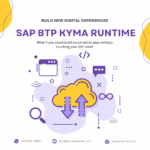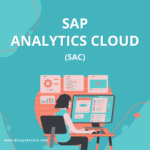Introduction
In the modern digital landscape, every enterprise is awash in data—from customer insights and financial transactions to supply chain records and social media signals. Yet, with all this information at their fingertips, many organizations still struggle with one critical challenge: integration. Disparate systems, siloed data, and convoluted workflows often stand in the way of making informed decisions and agile moves. So, how do we bridge the gaps between isolated systems? How do we turn a collection of disconnected applications into a seamless, cohesive network that drives business forward? The answer lies in a new kind of approach to integration, one that prioritizes simplicity, speed, and connectivity. Enter SnapLogic.
The Why: The Problem with Fragmented Systems
Imagine a business where customer data resides in one system, supply chain records in another, and financial information in yet a different repository. Each department works in its own bubble, and when leadership needs a unified picture of performance, they’re left piecing together data from multiple sources. This fragmentation leads to delays, errors, and missed opportunities.
Consider these common challenges:
- Delayed Insights: Decision-makers rely on reports generated from outdated or incomplete data. When data isn’t current, strategies and operations suffer.
- Operational Inefficiencies: Manual data entry and reconciliation become the norm, leading to wasted hours and increased potential for human error.
- Siloed Communication: Different systems mean that teams aren’t speaking the same language. What one department sees can be drastically different from another’s view, leading to misaligned strategies.
- Inflexible Processes: Traditional integration methods often involve heavy coding and long implementation times. When business needs change rapidly, these systems can’t keep pace.
The reality is that fragmented data systems act like friction in a well-oiled machine—they slow down progress, disrupt workflow, and hinder an organization’s ability to respond to the market in real time. What’s needed is a solution that doesn’t just connect systems but creates a unified ecosystem where every piece of data flows together naturally.
The How: SnapLogic’s Approach to Integration
SnapLogic introduces a fresh perspective on integration by rethinking how data flows within an organization. Rather than relying on complex, time-consuming coding projects, SnapLogic uses a cloud-based Integration Platform as a Service (iPaaS) that offers pre-built connectors—known as “Snaps”—to link systems effortlessly. This means that whether you’re dealing with cloud applications, on-premise systems, or even legacy software, SnapLogic provides the tools to create connections quickly and reliably.
Simplifying Integration with Pre-Built Snaps
The magic of SnapLogic lies in its user-friendly approach:
- Visual Workflow Design: Rather than writing code, users design integration pipelines with an intuitive drag-and-drop interface. This approach dramatically reduces the time it takes to set up data flows and automates the integration process.
- Pre-Built Connectors: The platform comes with a library of “Snaps” that cover a wide range of applications—from CRM systems and ERP platforms to databases and social media tools. These ready-to-use connectors eliminate the need for custom coding, ensuring that integration projects move from concept to implementation in record time.
- Scalability: As your business grows, so does your data. SnapLogic’s cloud-native architecture scales with your needs, handling increasing volumes of data without compromising performance. This means your integration solution is not only fast to implement but also robust enough to support your future growth.
Real-Time Data Flow and Automation
In today’s business environment, real-time information is crucial. SnapLogic enables the flow of data in real time, ensuring that decision-makers have access to the most current insights:
- Instantaneous Updates: With real-time data pipelines, changes in one system are immediately reflected in others. This minimizes the lag that often plagues traditional integration efforts.
- Automation of Routine Tasks: By automating data extraction, transformation, and loading (ETL) processes, SnapLogic reduces manual intervention. This not only increases accuracy but also frees up teams to focus on more strategic initiatives.
- Error Reduction: Automated workflows reduce the potential for human error—a key advantage when data accuracy is paramount for compliance and operational efficiency.
Unified Ecosystem: Bringing It All Together
SnapLogic is more than just a tool for data integration; it’s a framework for building a unified ecosystem. When all systems communicate seamlessly, businesses can operate as a single, coordinated entity rather than as a collection of isolated departments.
- Holistic Data Integration: By connecting diverse systems, SnapLogic creates a single source of truth. This holistic view enables organizations to make better-informed decisions, faster.
- Enhanced Collaboration: When data is centralized and standardized, teams across different functions can work together more effectively. Sales, marketing, finance, and operations share the same data foundation, reducing miscommunication and aligning strategies.
- Agile Adaptation: In a rapidly changing business landscape, agility is key. SnapLogic’s flexible approach means that new systems can be integrated quickly, and existing ones can be updated or modified with minimal disruption.
The What: Tangible Benefits of SnapLogic
When organizations adopt SnapLogic, the benefits extend beyond mere technical improvements. Here’s what businesses can expect:
Improved Efficiency and Speed
By reducing the need for custom coding and lengthy integration projects, SnapLogic allows businesses to implement changes in days rather than months. This speed is critical in a world where market conditions can change overnight.
- Faster Implementation: Projects that once took months can now be completed in a fraction of the time.
- Resource Savings: With less time spent on manual data integration, teams can redirect their efforts toward strategic projects that drive growth.
Enhanced Data Accuracy and Reliability
Accurate, reliable data is the lifeblood of any intelligent business. SnapLogic’s automated workflows ensure that data flows correctly and is processed consistently across systems.
- Reduced Errors: Automation minimizes the risk of human error, ensuring that data remains consistent and reliable.
- Consistent Reporting: With all systems connected, reporting becomes more accurate, enabling better decision-making.
Cost Savings
Integration projects can be expensive, both in terms of time and money. By leveraging pre-built connectors and automation, SnapLogic significantly reduces the costs associated with traditional integration methods.
- Lower Development Costs: No need for extensive custom coding or specialized IT resources.
- Operational Savings: Faster integration means lower overhead and reduced downtime.
Greater Agility and Innovation
In a competitive landscape, the ability to adapt quickly is paramount. SnapLogic’s platform empowers organizations to integrate new technologies and systems on the fly, fostering an environment where innovation can thrive.
- Seamless Upgrades: New systems and applications can be added with minimal disruption.
- Flexible Solutions: The platform adapts to changing business needs, ensuring that the integration framework remains robust over time.
Real-World Impact: Success Stories
Let’s look at how SnapLogic has made a difference in the real world:
Case Study: Global Retailer
A major retail chain struggled with siloed data across its online and brick-and-mortar operations. By implementing SnapLogic, the retailer was able to integrate its e-commerce platform with its inventory management and CRM systems. This resulted in real-time data visibility, improved customer satisfaction through accurate order tracking, and a 20% reduction in inventory costs.
Case Study: Financial Institution
A leading financial services company needed to streamline data flows between its legacy systems and modern cloud applications. SnapLogic’s pre-built connectors and real-time processing enabled the institution to achieve seamless data integration, significantly reducing manual reconciliation work and ensuring compliance with regulatory standards. The financial institution reported a 30% decrease in operational overhead and a marked improvement in data accuracy.
Case Study: Healthcare Provider
A healthcare provider was facing challenges in integrating patient data from various sources, which hindered effective care coordination. SnapLogic enabled them to create a unified data ecosystem that connected electronic health records, lab results, and patient management systems. The result was improved patient outcomes and faster access to critical health information, which ultimately led to enhanced service delivery.
Best Practices for Implementing SnapLogic
While SnapLogic offers a powerful platform for integration, its success depends on careful planning and execution. Here are some best practices to consider:
1. Define Clear Objectives
Start by mapping out the specific integration challenges your organization faces. Identify the key systems and processes that need to be connected and set measurable goals for what you want to achieve.
2. Involve Stakeholders Early
Bring together IT, operations, and business leaders to ensure that the integration strategy aligns with overall business objectives. Their input will help in designing workflows that meet real-world needs.
3. Start Small and Scale
Implement SnapLogic in a pilot project first—focus on a high-impact area where quick wins can be achieved. Use the lessons learned to refine your approach and gradually expand integration across the organization.
4. Leverage Pre-Built Snaps
Make the most of SnapLogic’s library of pre-built connectors. These Snaps are designed to simplify integration with popular systems, reducing the need for custom development and speeding up the implementation process.
5. Monitor and Optimize Continuously
Set up monitoring tools to track the performance of your integrations. Use the insights gained to optimize workflows, address bottlenecks, and ensure that data flows remain efficient and accurate.
6. Invest in Training and Support
Ensure that your team is well-versed in using SnapLogic. Comprehensive training and continuous support will help your staff adapt to the new system and fully leverage its capabilities.
Looking Ahead: The Future of Integration
As businesses continue to embrace digital transformation, the need for agile, reliable, and scalable integration solutions will only grow. SnapLogic is at the forefront of this integration revolution, offering a platform that adapts to the evolving needs of modern enterprises.
The future of business is about creating a connected ecosystem where data flows freely, systems communicate seamlessly, and every process is designed for efficiency. With SnapLogic, organizations are not just addressing integration challenges—they are building a foundation for continuous innovation and growth.
In a world where change is the only constant, the ability to integrate quickly and effectively will be the key differentiator between industry leaders and laggards. SnapLogic provides that competitive edge, enabling companies to react in real time, make informed decisions, and stay ahead of the curve.
Conclusion
Integration is no longer a luxury—it’s a necessity. For businesses seeking to overcome the challenges of fragmented systems and siloed data, SnapLogic offers a clear path forward. By providing a platform that simplifies, streamlines, and scales integration, SnapLogic turns complexity into clarity.
As you navigate your digital transformation journey, consider how a unified integration strategy can redefine your operations, reduce costs, and drive innovation. The future of your enterprise depends on it.
Are you ready to embrace a more connected, efficient, and agile future? With SnapLogic, the journey to seamless integration begins today.











